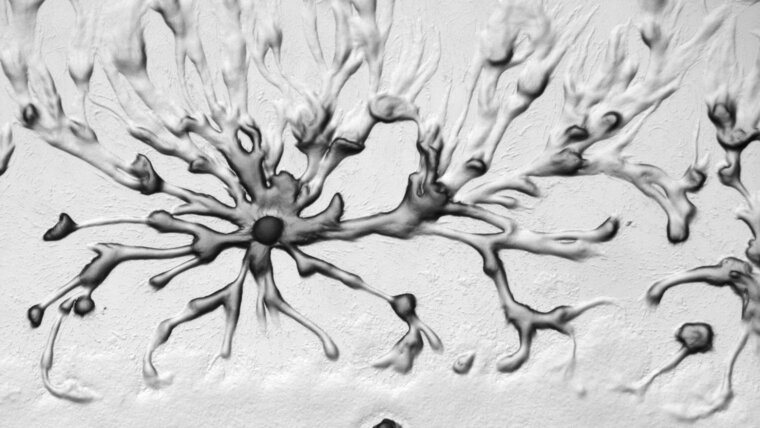
Studying mobile element-host interactions in a compact genome
Dictyostelia are a group of soil-dwelling protists that live as single cells and feed on bacteria. The model species Dictyostelium discoideum has a compact haploid genome in which two thirds of DNA code for proteins. We hypothesize that the haploid state of D. discoideum cells provides both defense against the intragenomic amplification of mobile elements and the intergenomic spreading in amoeba populations. We further speculate that complex transposon clusters found in D. discoideum chromosomes do not result from a bona fide integration preference of these transposons, but result from negative selection against cells affected by fatal insertional mutations by transposons into genes.
D. discoideum cells contain a populations of retrotransposons that are found in the close vicinity of tRNA genes. We speculate that intgeration near tRNA genes protects host cells of retrotransposons from insertional mutagenesis in protein-coding genes. Unfortunately, the analysis of "old" integrations in the current D. discoideum genome leaves us with the question whether the presumed "tRNA gene-targeting retrotransposons" are not as specific for their targets as we think, because insertional mutagenesis of structural genes are invisible due to negative selection against the cells affected by such events over evolutionary time. Thus, we have developed in vivo retrotransposition assays that allow a detailed, genome-wide analysis of de novo integrations in the D. discoideum genome. Using such retrotransposon assays we investigate the molecular mechanisms that retrotransposons use to determine tRNA genes in the D. discoideum genome.
From a pharmaceutical perspective on the development of human gene therapy, evaluating molecular mechanism of the highly specific genomic integration of Dictyostelium transposable elements may provide new clues to reduce the genotoxicity of integrating gene transfer vectors.
Selected recent publications:
- E. Kling, T. Spaller, J. Schiefner, D. Bönisch & T. Winckler (2018). Convergent evolution of integration site selection upstream of tRNA genes by yeast and amoeba retrotransposons. Nucleic Acids Res. 46, 7250-7260 (PubMedExternal link)
- T. Spaller, M. Groth, G. Glöckner & T. Winckler (2017). TRE5-A retrotransposition profiling reveals putative RNA polymerase III transcription complex binding sites on the Dictyostelium extrachromosomal rDNA element. PLoS ONE 12(4): e0175729 (PubMedExternal link)
- T. Spaller, E. Kling, G. Glöckner, F. Hillmann & T. Winckler (2016). Convergent evolution of tRNA gene targeting preferences in compact genomes. Mob. DNA 7, 17 (PubMedExternal link)
- A. Schmith, T. Spaller, F. Gaube, Å. Fransson, B. Boesler, S. Ojha, W. Nellen, C. Hammann, F. Söderbom & T. Winckler (2015). A host factor supports retrotransposition of the TRE5-A population in Dictyostelium cells by suppressing an Argonaute protein. Mob. DNA 6, 14 (PubMedExternal link)
- S. Wiegand, C. Seehafer, P. Hofmann, A. Schmith, T. Winckler, D. Meier, B. Földesi, B. Boesler, W. Nellen, J. Reimegård, M. Käller, J. Hällmann, O. Emanuelsson, L. Avesson, F. Söderbom & C. Hammann (2014). The Dictyostelium discoideum RdRP RrpC silences the centromeric retrotransposon DIRS-1 post-transcriptionally and is required for 3' silencing transitivity. Nucleic Acids. Res. 42, 3330-3345 (PubMedExternal link)
- O. Siol, T. Spaller, J. Schiefner & T. Winckler (2011). Genetically tagged TRE5-A retrotransposons reveal high amplification rates and authentic target site preference in the Dictyostelium discoideum genome. Nucleic Acids Res. 39(15), 6608-6619 (PubMedExternal link)